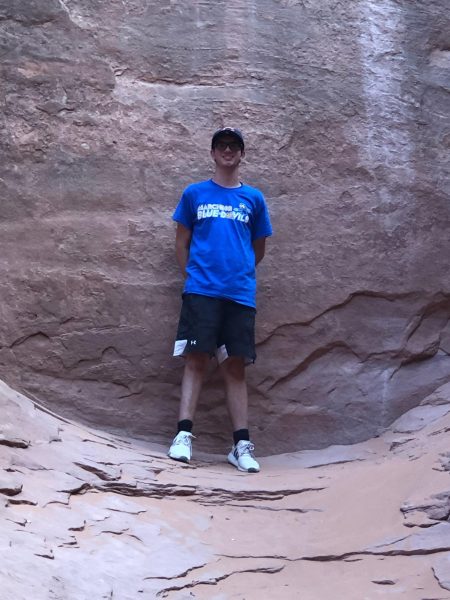Historical background of Nagorno-Karabakh
Nagorno-Karabakh, or Artsakh, has been a disputed territory for centuries between several ethnic groups: Christian Armenians, Persians, and Muslims of Turkic descent. A century before the Armenian Genocide, Karabakh became part of the Russian Empire, while having a mixed population of Christian Armenians and Turkic Azeris. As a result of World War One, The Bolshevik Revolution, and the Armenian Genocide, Nagorno-Karabakh was essentially split from the rest of Armenia by Joseph Stalin in 1921 and was placed under Soviet Azerbaijani control. Although under Soviet Azerbaijani rule, Nagorno-Karabakh remained autonomous; Armenians also remained the large ethnic majority for decades despite discrimination and ethnic-cleansing efforts by the Azerbaijani government.
In 1991, as a result of the collapse of the Soviet Union, the territory declared itself independent as the Nagorno-Karabakh Republic. Consequently, Azerbaijan reacted harshly to this declaration, and the government launched the First Karabakh War in 1992.
The First Nagorno-Karabakh War had significant effects; it caused almost 30,000 casualties and over one million citizens fled from both Armenia and Azerbaijan. Armenians living in Azerbaijan fled to Artsakh and the ethnic Azeris living in Artsakh left. Armenians gained control of Nagorno-Karabakh and were able to create a link from the mainland to the disputed area. In 1994, a ceasefire agreement, negotiated by Russia, was signed by Armenia and Azerbaijan, and left Nagorno-Karabakh along with other surrounding Azeri territories in Armenian control.
From the mid-1990s to the late 2010s, Nagorno-Karabakh was left autonomous from Armenia, and changed the name to the Republic of Artsakh in 2017 while also adopting a fully presidential government.
In 2020, Azerbaijan started the Second Nagorno-Karabakh Conflict with an invasion that recaptured the Azeri territory around Artsakh. Some 7,000 Azerbaijani and Armenian soldiers were killed during more than a month of fighting, with more Armenian casualties than Azeri. Similarly to the first conflict, a ceasefire–prompted by Russian peacekeepers–was enacted, which warranted safe movement between the Armenian mainland and Artsakh through an area known as the Lachin Corridor. Also included in this ceasefire was Armenia’s agreement to return the Azeri territory surrounding Artsakh back to Azerbaijan.
The ceasefire didn’t last long; two years later, after Russian peacekeepers had departed, fighting along the Armenia and Azerbaijan border started between troops from both sides, with soldiers from both sides being killed in the small disputes. In September of 2023, after Azerbaijan had held a months-long blockade of the Lachin corridor, their forces overwhelmed the opposing Armenian forces and the Azerbaijanis seized the region of Nagorno-Karabakh after just a day of fighting. Authorities in Armenia and Artsakh agreed to a ceasefire, and The Republic of Artsakh was dissolved on January 1st, 2024. Between September and January, Armenia absorbed over 100,000 ethnic Armenians who escaped from Artsakh before its dissolution. Since Azerbaijan gained total control of the land, they have begun their plan to demolish all aspects of Armenian heritage that are present in Artsakh. Destroying Armenian churches, desecrating historical cemeteries and memorials, and demolishing former Armenian government buildings is just the tip of the iceberg. Since 1991, Azerbaijan has been wiping out all traces of ethnic Armenian heritage in other regions, but they have accelerated their campaign considerably. Prior to the dissolution of Artsakh, the Azerbaijani government already referred to Artsakh as “western Azerbaijan.” Additionally, Armenia continues to struggle with absorbing the tens of thousands of refugees from Artsakh, even after 13 months have passed since Artsakh’s dissolution.
Ruzanna’s account from the start of the second Nagorno-Karabakh Conflict
Ruzanna was born and raised in the Armavir Province of southwestern Armenia. Prior to the start of the second Nagorno-Karabakh war, she was only in middle school, and didn’t follow politics or news very consistently. However, she realized there was tension building between Armenia and Azerbaijan, which made everyone nervous. On the first day of the invasion by Azerbaijan, her morning started normally, as she went to school and her parents went to work. When she entered school, she saw groups of teachers and students crying in classrooms; they told her the war had started.
Later, when she returned home, her family couldn’t focus on personal matters because they were constantly checking the news. Although none of Ruzanna’s family was directly impacted by the war, many of their neighbors as well as other students and teachers at her school had family and friends in the warzone. Their entire community was scared for their lives. While her town was far from the capital of Yerevan and the warzone in Artsakh, it had a nuclear power plant nearby, which was threatened with potential assaults. Luckily, the threats were not credible; nevertheless, the sense of security in their town had vanished.



